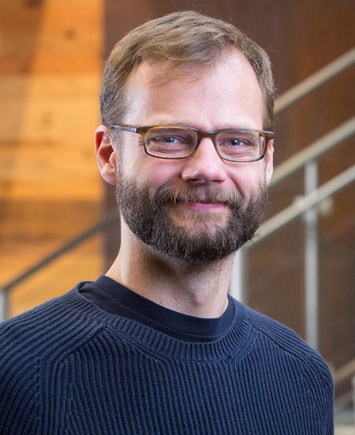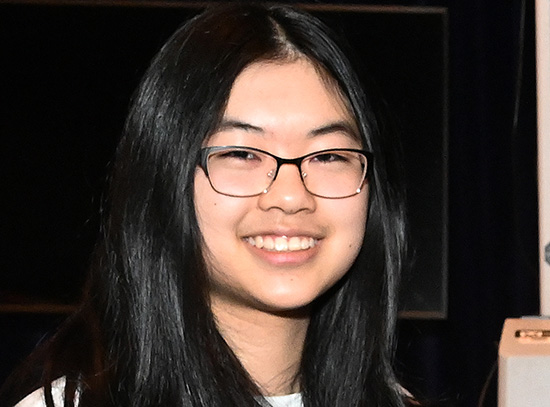National Synchrotron Light Source II User Profile: Stephan Hruszkewycz
June 19, 2017
Stephan Hruskewycz is an assistant physicist in the Materials Science Division at the U.S. Department of Energy's (DOE) Argonne National Laboratory. While he regularly conducts research at Argonne's own synchrotron user facility, the Advanced Photon Source (APS), his work on the nanoscale structure and behavior of materials has led him to book beamtime at the DOE's newest synchrotron, the National Synchrotron Light Source II (NSLS-II). Both NSLS-II and APS are DOE Office of Science User Facilities.
What are you studying at NSLS-II?
The focus of our NSLS-II experiments has been to image defects and imperfections in the crystal lattice of nanoscale materials using a new imaging technique known as Bragg Projection Ptychography. Specifically, we have been studying stacking faults in nanowires made of III-V semiconductors, a class of semiconductor that results from the combination of elements from column III on the periodic table (mainly aluminum, gallium, and indium) and column V (nitrogen, phosphorous, arsenic, and antimony). These materials have properties that make them excellent for certain applications; for example, solar cells made of III-V cells are very efficient.
During our next run, we will be imaging strain fields in complex oxide thin-film nanostructures. These classes of materials have potential uses for energy conversion in solar and fuel cell applications, and their nanoscale structure plays a large role in performance. By studying these structures in detail, we may be able to figure out how to make these materials perform better.
Why is NSLS-II is particularly suited to your work?
The Hard X-ray Nanoprobe (HXN) beamline at NSLS-II delivers a coherent hard x-ray beam focused to a few tens of nanometers and the ability to rotate the sample and detector to enable Bragg diffraction with a nanofocused beam. We are capitalizing on the coherence and stability of the focused beam to convert a series of Bragg diffraction patterns measured from different overlapping positions of the sample into an image of the lattice structure inside a specific region of the crystal. The result provides an image with a resolution down to just a few nanometers, as well as picometer-level sensitivity to lattice distortions.
Tell us about your background and how you arrived at this field of research.
I have been interested for some time in developing new methods to exploit coherent hard x-rays to reveal of the structure and dynamics of materials. Recently, I have focused on applying these methods to materials with inhomogeneous internal lattice structures that dictate their overall properties, such as nanostructured oxide thin films and semiconductors. To me, this is an exciting area of research, one where cutting-edge materials science questions can be answered with new x-ray imaging methods at state-of-the-art synchrotron sources that deliver highly coherent beams.
Who else is involved in this work?
So far, I have been joined at NSLS-II by Megan Hill, a graduate student in Northwestern University's Materials Science and Engineering Department; Martin Holt, a staff scientist in Argonne's Center for Nanoscale Materials; and Brian Stephenson, a senior physicist in Argonne's Materials Science Division.
2017-12304 | INT/EXT | Newsroom










